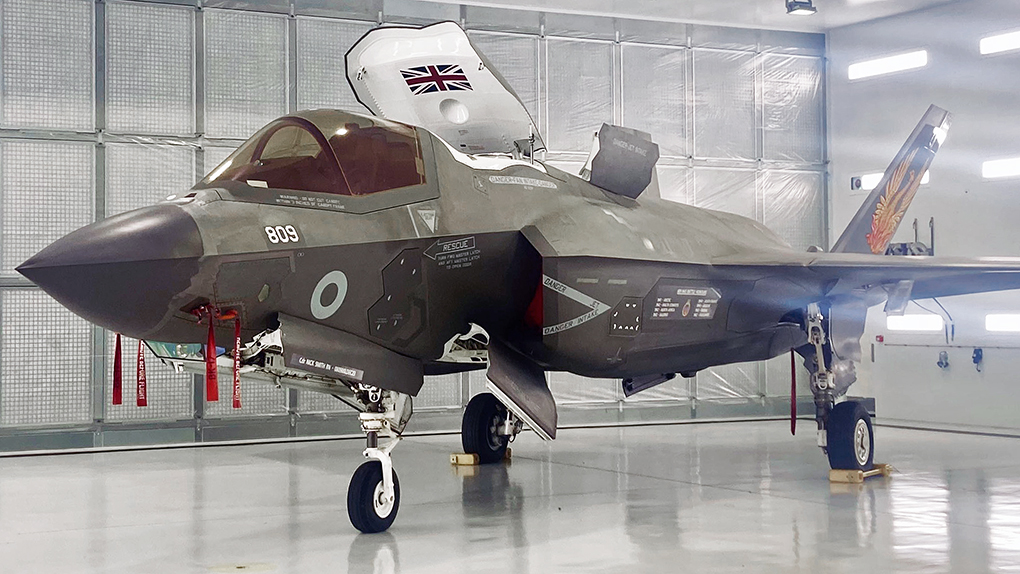British F-35B Joint Strike Fighters are, for the first time, being operated by a Royal Navy squadron, which will eventually take them to sea on aircraft carriers alongside their Royal Air Force squadron counterparts. The milestone has been a long time coming and full operating capability — when both squadrons can be deployed concurrently — is still not due until 2025, amid continuing questions over how many F-35Bs the United Kingdom will actually buy.
The Royal Navy’s 809 Naval Air Squadron (NAS) was recommissioned today with F-35Bs at RAF Marham in Norfolk, eastern England. The unit, which operates under the motto “Immortal,” is the second frontline F-35B squadron in the Lightning Force. Like the Royal Air Force’s No. 617 Squadron, the “Dambusters,” it is jointly manned by Royal Navy and Royal Air Force personnel, and it, too, will eventually take its short takeoff and vertical landing (STOVL) jets aboard the two Queen Elizabeth class aircraft carriers.
The other two British units flying the F-35B have second-line duties, with No. 207 Squadron also at RAF Marham for operational training, and No. 17 Squadron at Edwards Air Force Base, California, where it undertakes operational test and evaluation for the jet. This U.S.-based F-35 test effort has recently expanded to include Australian and British participation, with the United Operational Test Team (UOTT) including test and evaluation of the Block 4 version as well as for non-U.S. weapons like the Meteor beyond-visual-range air-to-air missile.
809 NAS was originally established in 1941 flying Fairey Fulmars but had re-equipped with the Supermarine Seafire before the end of World War II. In the postwar years, the squadron flew the de Havilland Sea Hornet and the same company’s Sea Venom, before receiving the Blackburn Buccaneer carrier strike aircraft. The squadron disbanded with the end of U.K. ‘cat and trap’ carrier operations in 1978 before returning with the STOVL Sea Harrier, which it took into battle in the Falklands conflict. 809 NAS had been dormant, however, since December 1982.

In September 2022 the U.K. Ministry of Defense stated that 809 NAS was “due to stand up in quarter two of 2023,” leading to full operating capability (FOC) in 2025. By the middle of this year, however, it was confirmed that part of this schedule had slipped. The squadron would now recommission toward the end of 2023, although FOC is still predicted for 2025.
Once FOC is achieved, the U.K. Lightning Force will be able to operationally deploy two squadrons concurrently, a significant capability, but one that comes at great cost and with longstanding concerns about the future size of the F-35B fleet.
As of May 1, this year, the United Kingdom had received 31 F-35Bs, one of which was lost in a takeoff mishap in the Mediterranean Sea in 2021 and which will be replaced in a future order. These 31 jets are part of an initial order for 48 aircraft, known as Tranche 1. The last of these are due to be handed over by the end of 2025.
The U.K. Ministry of Defense had long said that the target was a fleet of 138 F-35Bs, an aspiration outlined in the 2015 Strategic Defense and Security Review (SDSR). Since then, however, budgetary concerns have apparently led to a rethink.
So far, the U.K. Ministry of Defense has confirmed plans to place a Tranche 2 order for 27 aircraft, which will provide a total fleet size of 74 aircraft. As a recent Defense Committee report prepared for the House of Commons Committee states: “There remains ambiguity about plans for the F-35 fleet in terms of its eventual size, operational deployment, and attribution; and there are ongoing concerns about program costs and force growth rate.”
That same report said that the Royal Air Force’s current combat aircraft fleet provides a “boutique high capability.” While the F-35B may come with the highest-end capabilities, the force overall lacks strength in depth and has an inadequate attrition reserve. This would be a particular problem in a peer-on-peer conflict that might be fought against Russia, for example. With plans to retire earlier versions of the Typhoon multirole fighter, around 100 of which are in service, the problem will only worsen.
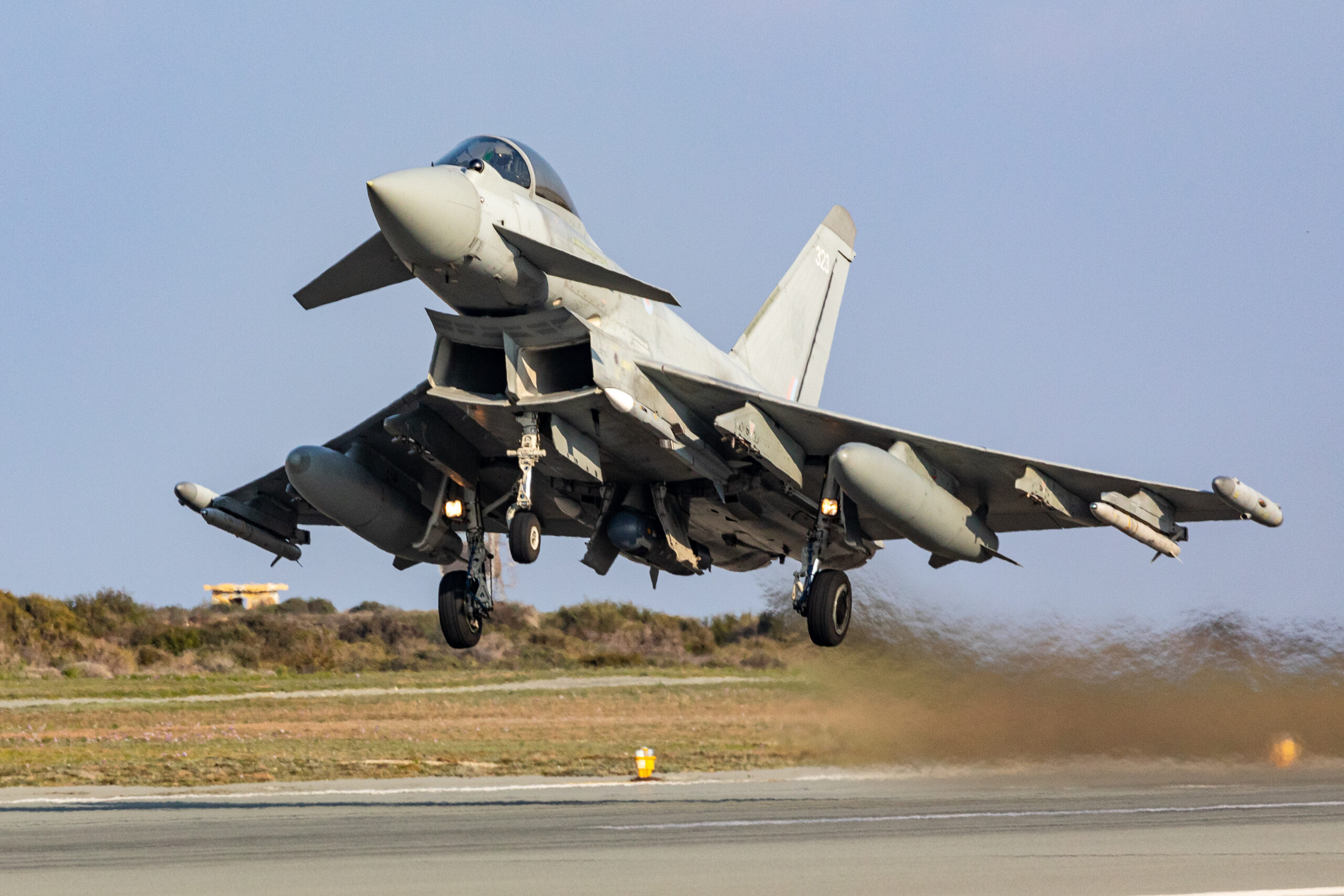
The Defense Committee report suggests that committing to buy more F-35s could be the best way of addressing what it describes as “the combat mass deficit.” Rather than waiting for the sixth-generation Tempest fighter, the future of which remains uncertain anyway, or buying more fourth-generation Typhoons, the F-35 is ready and available now — although it comes at a cost.
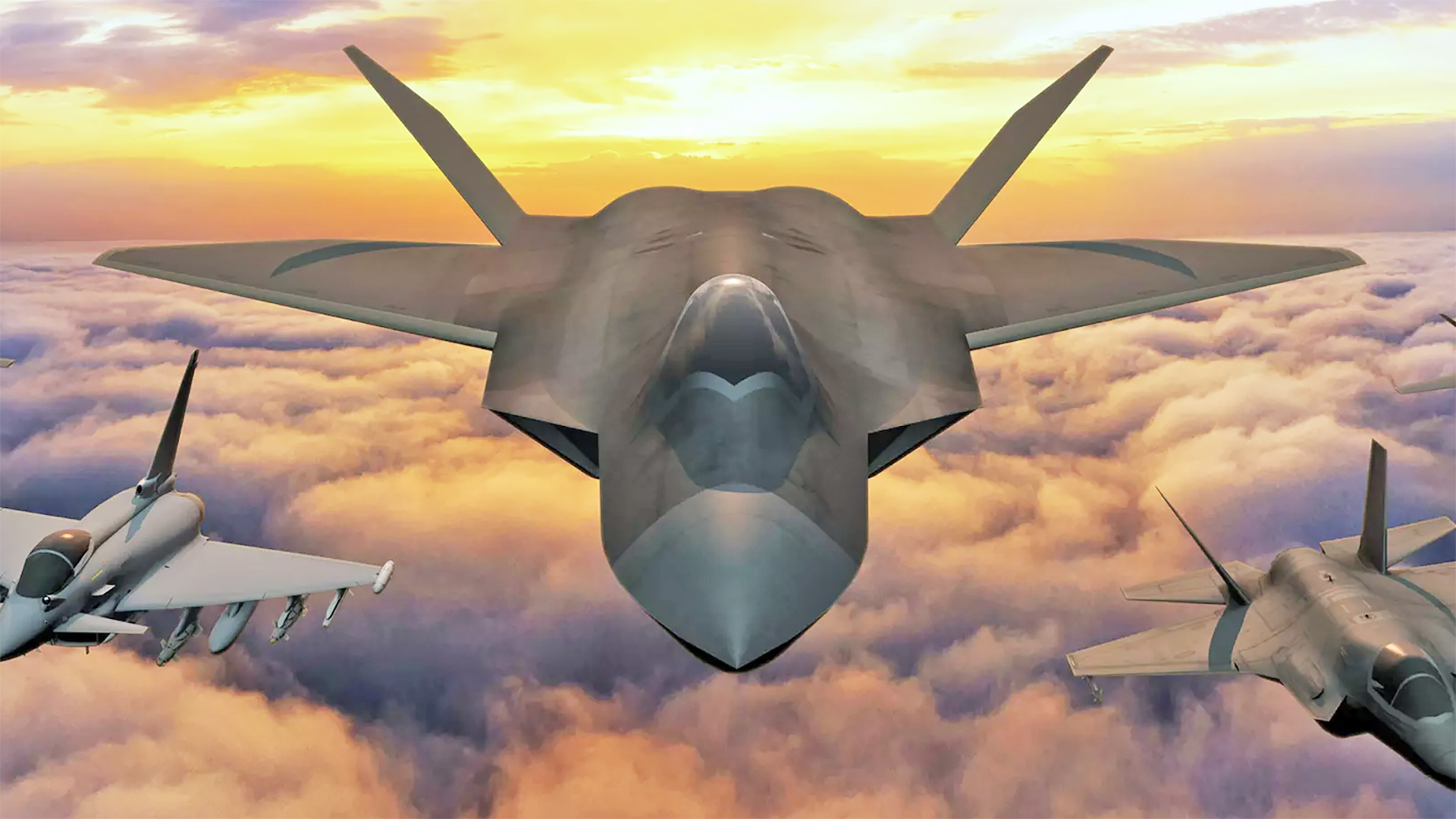
The U.K. Ministry of Defense has said that it remains open to the possibility of purchasing further F-35s beyond the 74 now specified, although a decision is not likely until around the middle of this decade. The ministry will then consider:
“…the future operating environment, the capabilities of likely adversaries, how we are planning to evolve the way we fight, and the number of aircraft required to maintain planned force elements throughout the life of the Queen Elizabeth carriers. Additional factors include the development of the Global Combat Air Program, how our crewed aircraft might operate with additive capabilities and uncrewed platforms, and how all of these might be connected digitally.”
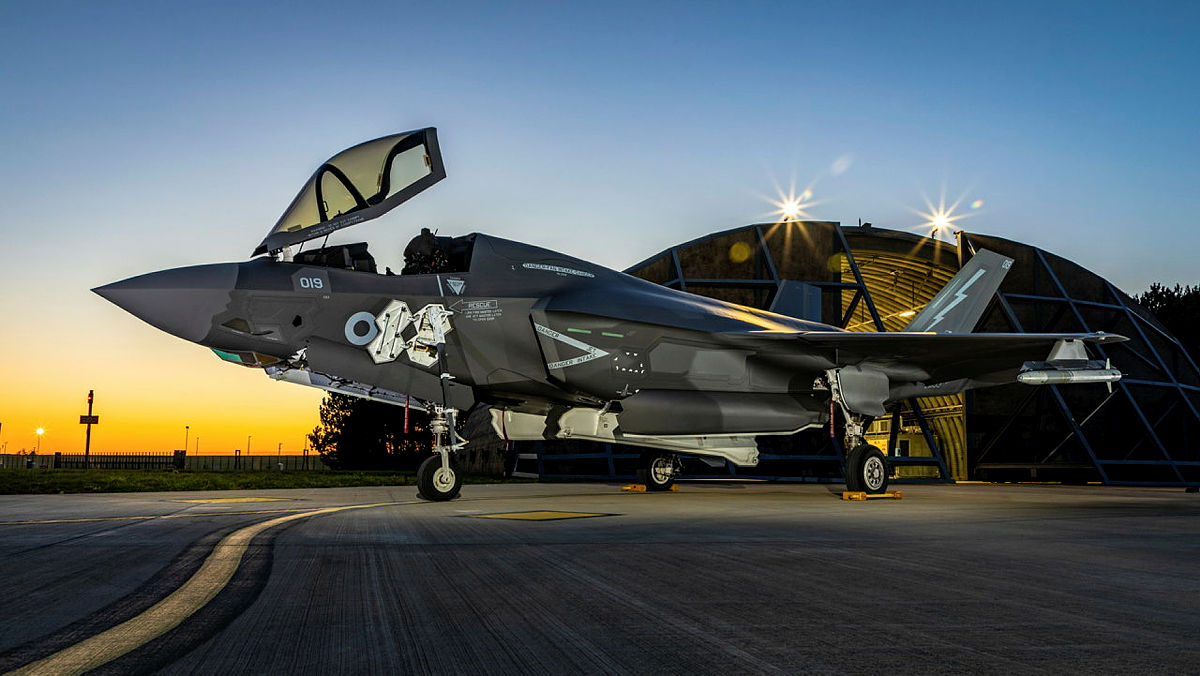
Buying more F-35s would only complete part of the combat mass puzzle, however. There have also been problems in growing the force even with the current rate of deliveries. In particular, there’s been a lack of aircraft maintainers to ensure that the jets are actually ready to fly.
Questions about buying more F-35s inevitably lead to the issue of Joint Strike Fighter variants. So far, the United Kingdom has committed to the STOVL F-35B version that can operate from its two aircraft carriers, as well as potentially also from highways and other improvised airstrips. Tranche 2 will also comprise F-35Bs. An earlier plan to procure F-35C variants and fit the carriers with catapults and arrestor gear was abandoned on cost ground, during the construction of the ships.
However, the conventional take-off and landing (CTOL) F-35A would offer certain advantages, apart from not being able to deploy aboard carriers. Critically, the F-35A offers superior range and payload. While the F-35B has a combat radius of around 450 nautical miles and cannot carry 2,000lb-class weapons in its smaller weapons bays, the F-35A has a combat radius of around 650 nautical miles and can carry those larger weapons. The F-35A is also a 9G-capable jet, while the F-35B is 7.5G. The F-35A is also cheaper to acquire and operate. It also packs an internal gun.
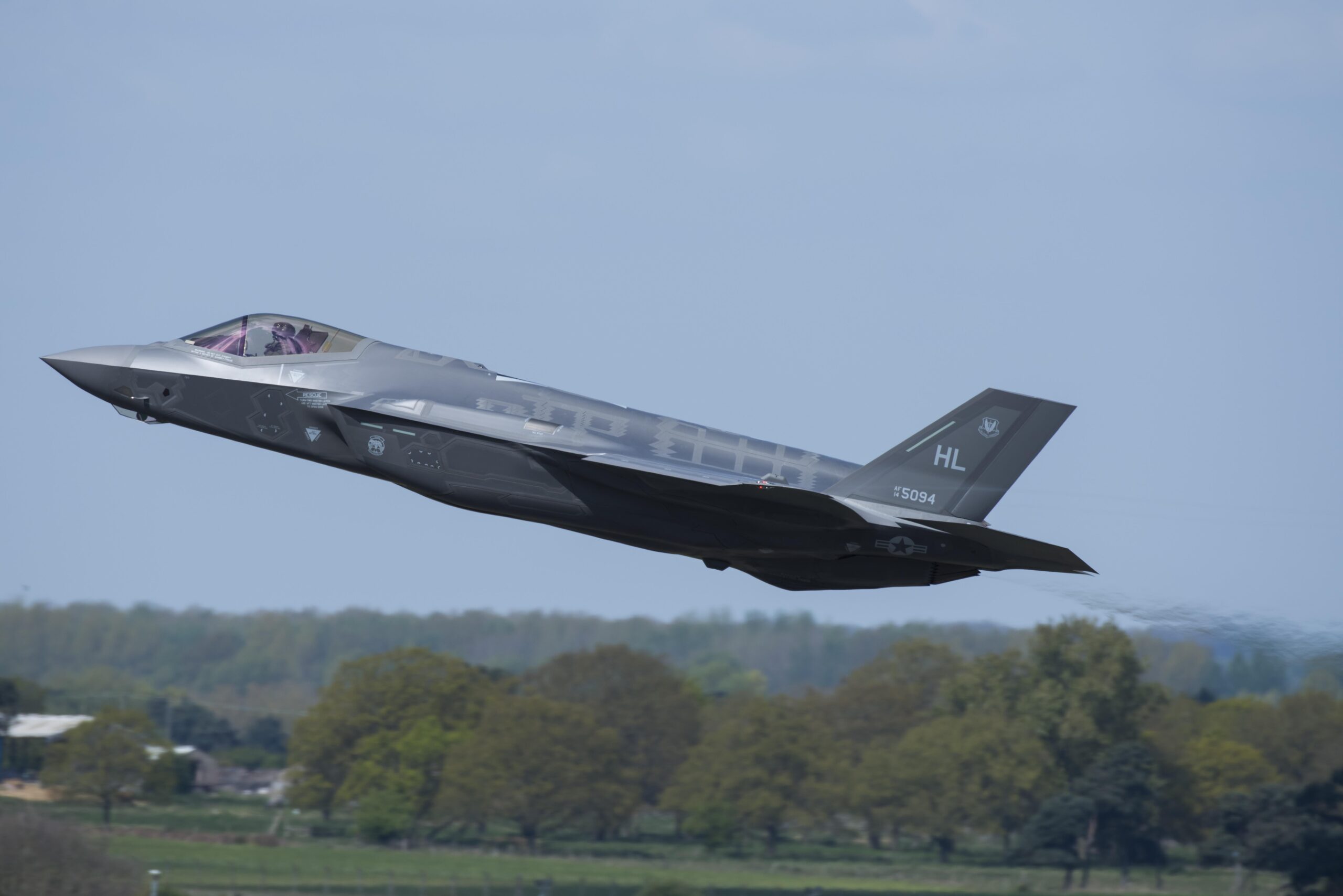
Of course, the Royal Navy has always supported the F-35B over the F-35A, since it’s integral to its aircraft carrier operations, and that will likely only be reinforced now that 809 NAS has been established (and despite the squadron being jointly manned by the Royal Air Force).
However, a mixed force of F-35A and F-35B models could still be an option for the future, provided that both fleets are acquired in meaningful numbers.
As Justin Bronk, Senior Research Fellow for Airpower and Technology at the Royal United Services Institute says: “If you were buying, for example, two squadrons’ worth of primarily land-based F-35s, it would start to make sense to buy As … you are introducing a lot of additional inefficiency and lack of flexibility there, so, unless it is a significant chunk of additional aeroplanes, it does not really make sense. If it is another, let us say, 16 on top of the 27 [in Tranche 2], it probably makes sense to stick with Bs.”
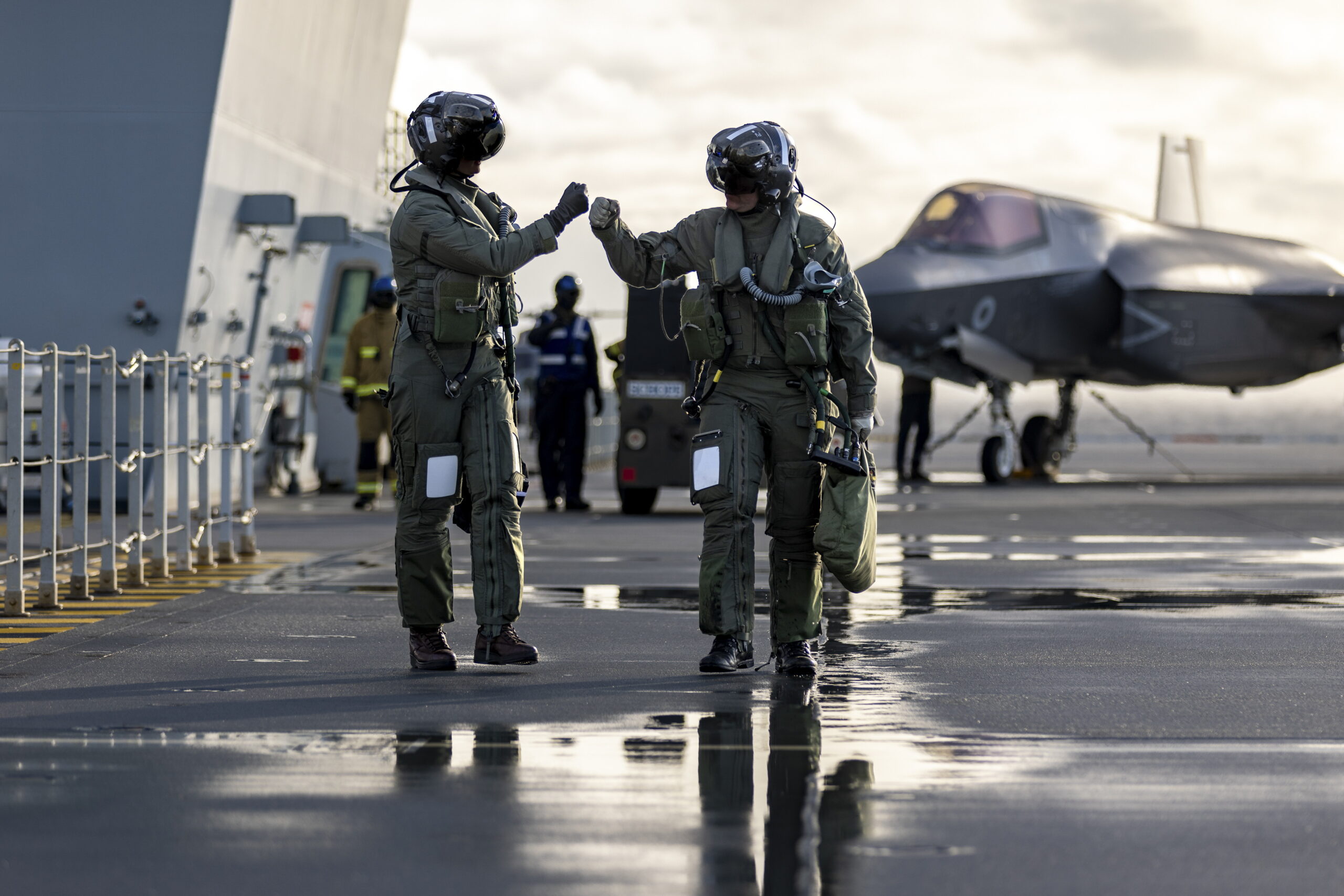
Meanwhile, Gen. David Deptula, the former director of plans and programs for Air Combat Command, told the Defense Committee that “frankly, you ought to be considering buying F-35As between now and when you get Tempest on board.”
With an all-STOVL fleet, there are also issues around how best to operate the joint Lightning Force.
As Capt. (ret’d) Dan Stembridge told the Defense Committee, “The politics of this is, are the F-35s that we have in the U.K. carrier-borne air systems that are able to operate on land, or are they land-based systems that are able to operate at sea? Fundamentally, we make the choice to not decide. That drives double accounting over what you are using those systems for.”
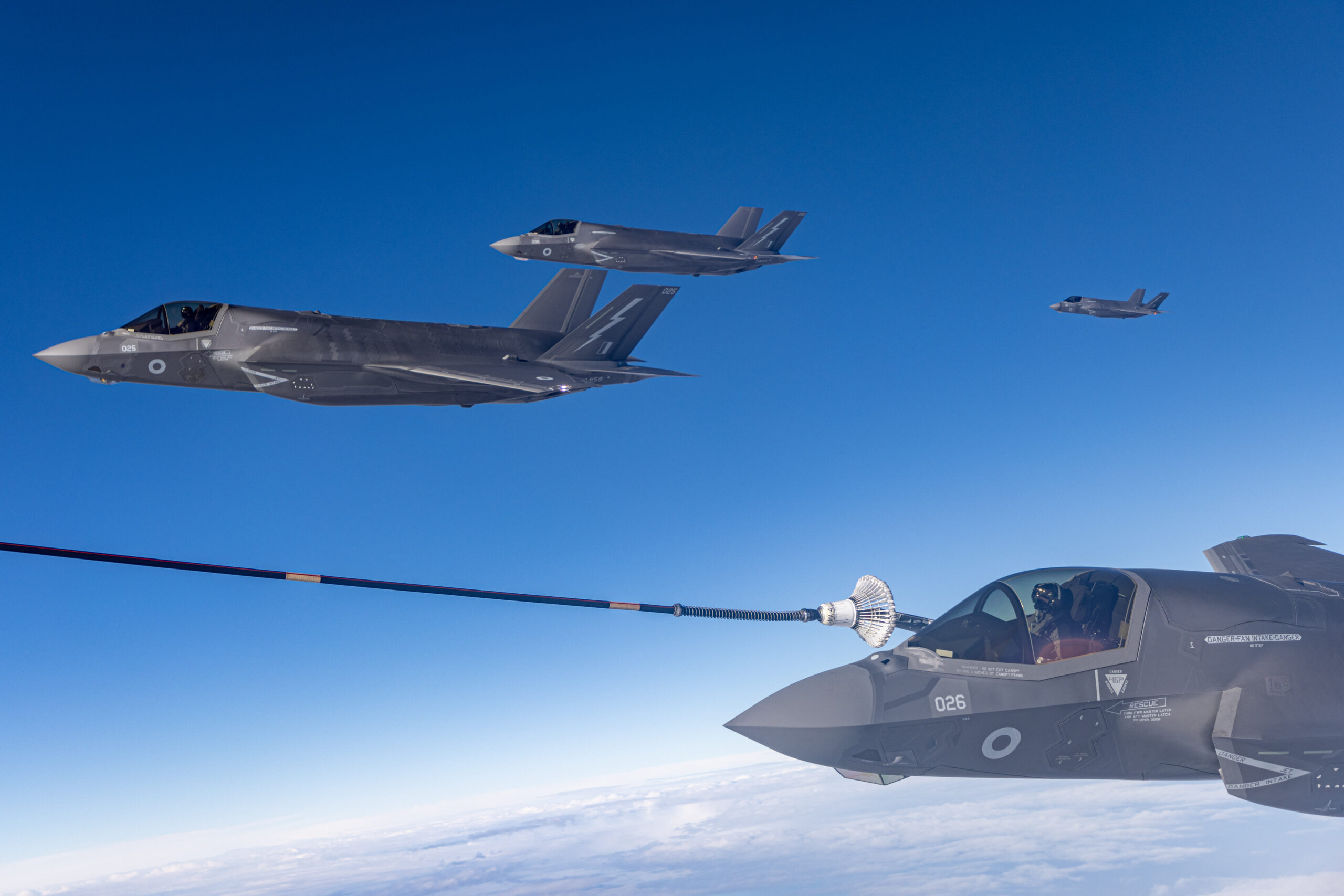
Furthermore, while 72 F-35Bs might be sufficient for the carrier strike capabilities that the Royal Navy is committed to providing, that would be at the expense of the land-based capabilities that the Royal Air Force is expected to generate.
Speaking to the U.K. Parliament’s Defense Committee in September 2020, Nick Childs, Senior Fellow for Naval Forces and Maritime Security at the International Institute for Strategic Studies, said he considered a number “significantly higher” than 48 F-35Bs would be required to meet the ambition of 24 jets available for carrier strike. Taking into account training and other demands, a figure of 60-70 jets would be reasonable, Childs contended. And this would be sufficient for carrier strike only.
Part of a solution can likely be provided by joint operations with the U.S. Marine Corps, which provided additional F-35Bs for the U.K. Carrier Strike Group’s deployment in the Indo-Pacific in 2021. This, however, relies upon the Marine Corps having additional capacity and, in an operational environment, would need the U.S. government to approve its participation in whatever operations were being conducted.
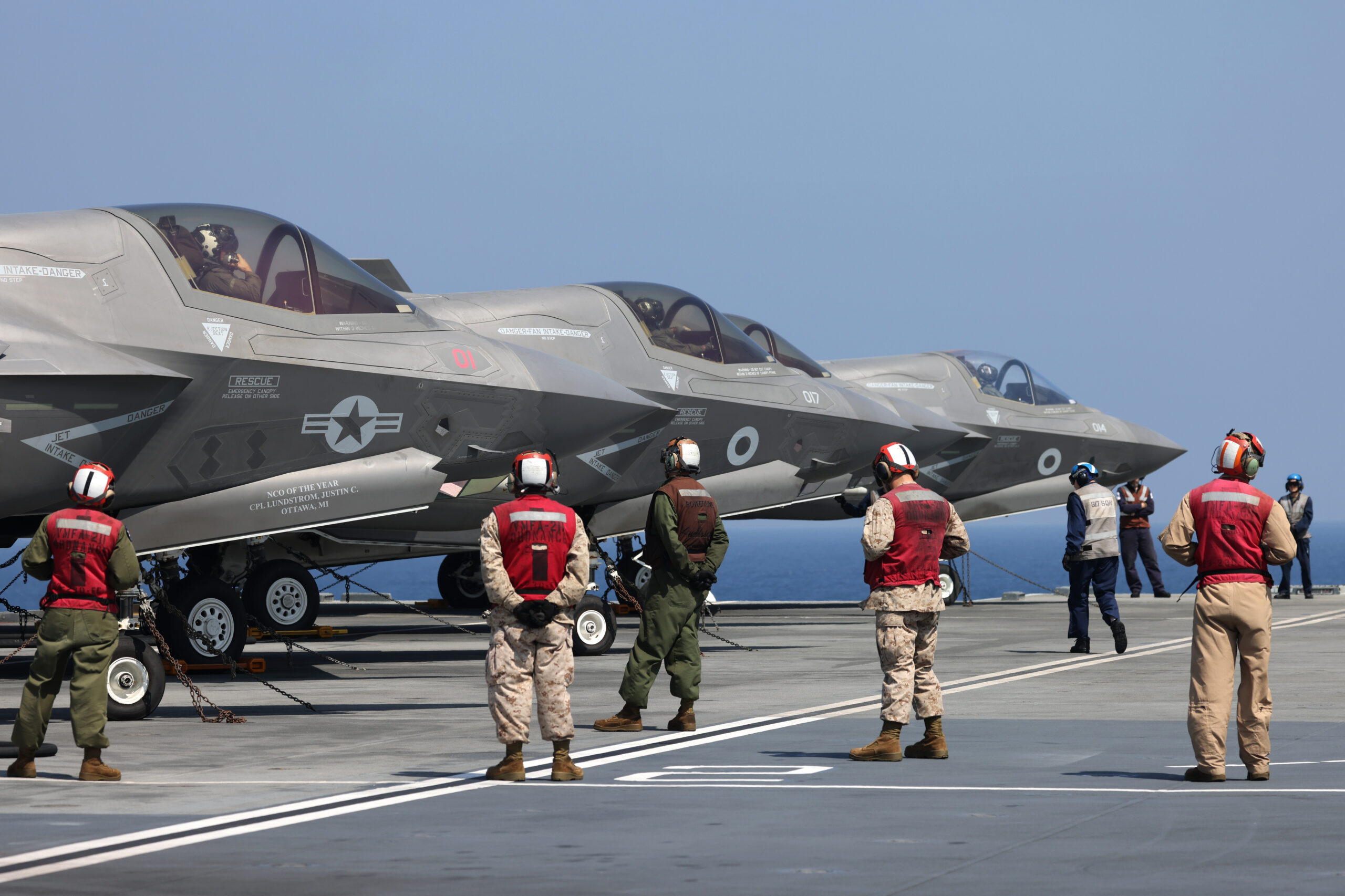
Casting a long shadow over British discussions over the future of the Lightning Force are the costs involved. According to Lockheed Martin, the unit cost of a single F-35B in 2020 was $101 million and this figure has seen a 32 percent reduction between 2014 and 2022. Nevertheless, the unit cost remains higher than predicted. The introduction of Block 4 F-35 will provide a whole new level of capabilities and additional weapons to the F-35 family. If the UK times its order right, it would be getting that configuration of F-35. At the same time, the cost of each Block IV jet will go up considerably compared to the aircraft coming off the line now.
Furthermore, the unit cost is just one factor and arguably less meaningful than operating costs. The sustainment cost of the F-35B, in particular, is something that has caused alarm for the U.S. government, too.
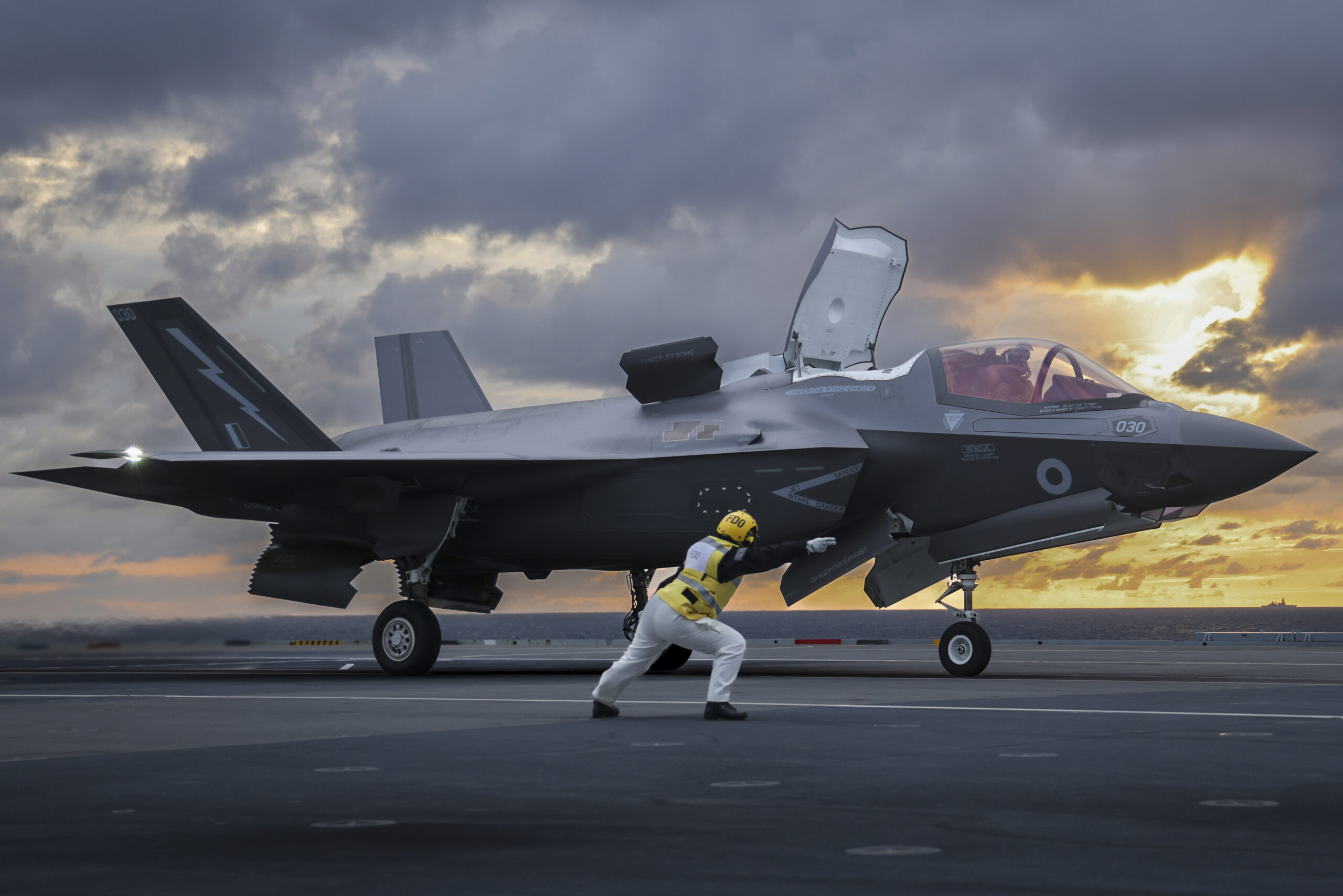
At some point soon, if the U.K. government is to address the shortage of aircraft numbers in its combat fleet, a cost-benefit analysis will have to look at whether the F-35’s unique range of advanced capabilities is worth the money. At the same time, it seems almost inevitable that thought will be given to the F-35A version.
Adding the conventional take-off and landing version of the Joint Strike Fighter to the fleet would not win the support of the Royal Navy. For the time being, however, the service is very much back in the carrier fighter game, with the “Immortals” of 809 Naval Air Squadron a very visible symbol of this regeneration of capabilities.
Contact the author: thomas@thedrive.com
